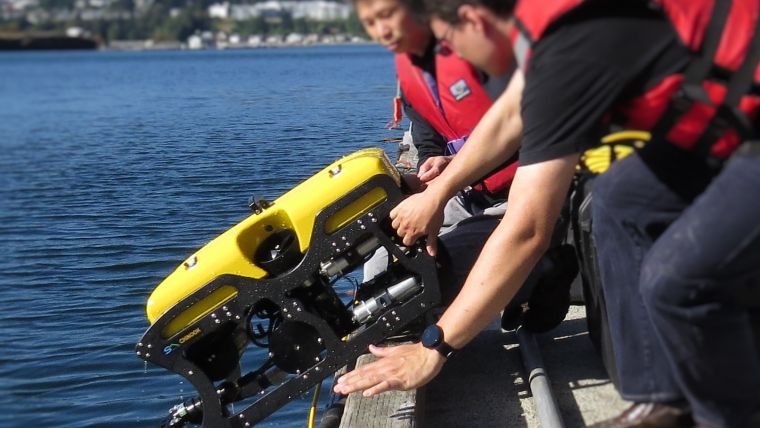Department of Fisheries and Oceans Canada Inspects the High Arctic
The Department of Fisheries and Oceans Canada in Manitoba will use a SEAMOR Marine Remotely Operated Vehicle (ROV) to inspect the High Arctic area which remains frozen year-round. The Chinook ROV will take part in research and evaluating ways to protect this special ecological region. The vehicle will also be used to conduct ecosystem identification and benthic surveys (underwater mapping of the seafloor) and inspection of first-year ice and multi-year ice.
Auto-altitude system
SEAMOR Marine's Chinook ROV will be equipped with a handheld pendant controller, and a fibre optic tether multiplexer upgrade. These will help control a wide array of onboard instrumentation such as USBL underwater positioning system with GPS integration, allowing the ROV to be tracked in real-world coordinates in real time, and an integrated Tritech Micron Echosounder which permits the ROV to measure its height above the sea floor and maintain its height with its auto-altitude system.
Double-dot tilting colour-laser scaling system
The vehicle will also come with a dual function gripper, a sensor skid (which provides opportunities to integrate additional sensors to the system), double-dot tilting colour-laser scaling system, and an HD camera with uncompressed digital output (with zoom and manual/auto-focus control, exposure and colour adjustment).
The high Arctic will be ice-free
The High Arctic is an important area encompassing the northern regions of Canada (Arctic Basin, Baffin Bay and the Pikialasorsuaq, or North Water Polynya) and reaches to western Greenland. This area remains frozen throughout the year, for multiple years, acting as an important refuge for ice-dependent species such as polar bears, beluga and narwhal whales, walrus' and seals, as well as the communities in these regions that rely on these species for food, dress and shelter. With estimates for sea ice decreasing at a rate of 11% per decade in the Arctic due to climate change, it is anticipated that the Arctic could lose its summer ice by 2050 and be largely ice-free by 2070.
International cooperation
'The Last Ice Project' is a collaboration between the Department of Fisheries and Oceans Canada (DFO), Parks Canada Agency (PCA) and Indigenous, Northern and International partners (including the World Wildlife Fund-Canada and Pristine Seas – National Geographic Society).














